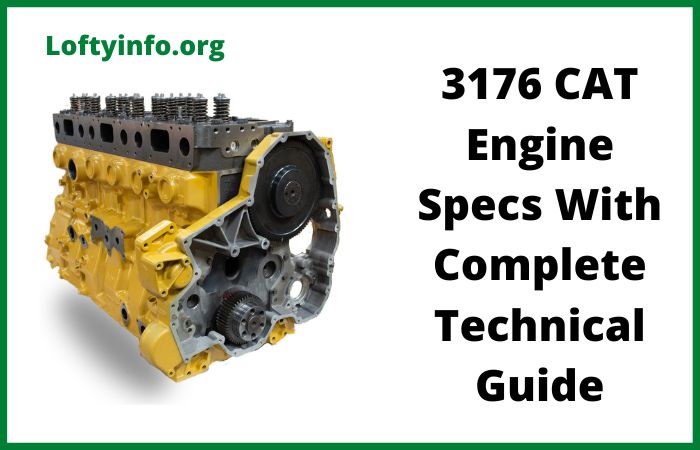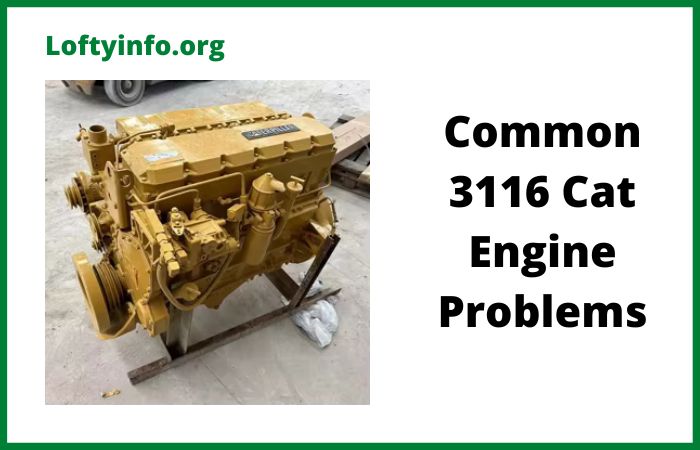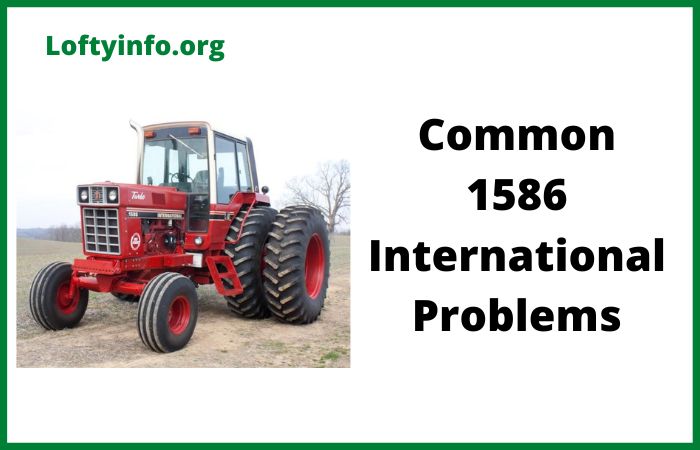3176 CAT Engine Specs: Complete Technical Guide
The Caterpillar 3176 stands as one of the most reliable diesel engines ever manufactured for heavy-duty applications.
Operators in trucking, marine and industrial sectors have depended on this workhorse for decades due to its exceptional durability and performance characteristics.
Understanding the complete specifications of this engine helps owners make informed decisions about maintenance, repairs and operational parameters that maximize efficiency and longevity.
3176 CAT Engine Specs
1) Engine Configuration and Design
The 3176 features an inline six-cylinder configuration with four-stroke cycle operation and electronically controlled unit injection.
This design philosophy delivers optimal power distribution while maintaining mechanical simplicity that technicians appreciate during service intervals.
The engine incorporates a straight-six cylinder alignment that provides smooth operation and balanced power delivery throughout the rpm range.
The electronic control system represents a significant advancement over mechanical injection systems.
This technology enables precise fuel delivery timing and quantity adjustments based on operating conditions.
Sensors continuously monitor parameters like coolant temperature, oil pressure, atmospheric pressure and throttle position to optimize combustion efficiency.
The electronic governor maintains consistent engine speed under varying load conditions without the drift associated with older mechanical systems.
2) Displacement and Bore Specifications
The engine displaces 10.3 liters or 629 cubic inches with a cylinder bore diameter of 4.92 inches (125 millimeters) and stroke length of 5.51 inches (140 millimeters).
This displacement provides an excellent balance between power output and fuel economy for medium to heavy-duty applications.
The bore and stroke dimensions create a slightly undersquare design where stroke exceeds bore diameter.
This configuration typically favors torque production over high-rpm horsepower which suits the engine’s intended applications perfectly.
The compression ratio measures 16.1 to 1 which falls within the typical range for modern diesel engines.
This relatively high compression ratio contributes to efficient combustion and cold-starting capability without requiring excessive glow plug assistance.
The compression ratio also influences thermal efficiency which directly impacts fuel consumption rates across the operating range.
3) Power and Performance Ratings
Power ratings span from 187 kilowatts to 242 kilowatts which translates to 250 through 325 horsepower at engine speeds between 1700 and 2100 revolutions per minute.
This broad power range accommodates various applications from lighter-duty trucks to heavy construction equipment.
Different power ratings utilize modified turbocharger specifications, fuel injection parameters and electronic control programming to achieve target output levels.
Marine versions of the engine can produce up to 600 horsepower at 2300 rpm with peak torque reaching 1889 pound-feet at 1600 rpm.
These higher output marine ratings demonstrate the engine’s robust internal components and cooling system capacity. Marine applications typically operate at sustained high loads where durability becomes paramount.
The substantial torque output at relatively low engine speeds makes the 3176 ideal for pushing heavy vessels through water resistance.
The power curve characteristics show peak torque occurring well below maximum horsepower rpm.
This torque bias provides excellent pulling power for climbing grades in trucks or maintaining speed in marine vessels against current and wind resistance.
Operators appreciate the responsive throttle feel that comes from having substantial torque available across a wide rpm band.
4) Physical Dimensions and Weight
The 3176 measures 60.8 inches in length, 38 inches in width and 39.5 inches in height with a dry weight of 2590 pounds.
These compact dimensions allow installation in chassis and engine bays originally designed for smaller displacement engines.
The relatively modest width proves particularly beneficial in over-the-road trucks where space between frame rails limits engine size options.
The dry weight specification excludes coolant, lubricating oil, fuel and other operating fluids. Fully serviced engine weight increases by approximately 200 to 300 pounds depending on fluid capacities and accessory equipment.
Installation planners must account for total wet weight when calculating axle loading and gross vehicle weight ratings.
The weight distribution with inline cylinder arrangement provides favorable front axle loading compared to V-configuration engines of similar displacement.
5) Cooling and Lubrication Systems
The cooling system holds 12 gallons or 45 liters of coolant while the lubrication system contains 7.5 gallons or 28 liters of engine oil.
These generous fluid capacities contribute significantly to thermal management and component longevity.
Larger coolant volume helps maintain stable operating temperatures during sustained high-load operation or in hot ambient conditions.
The cooling system incorporates a thermostat that regulates coolant flow to maintain optimal operating temperature.
A jacket water pump circulates coolant through the engine block and cylinder head passages.
Marine versions include a sea water pump and integral heat exchanger for closed-loop freshwater cooling.
The aftercooler reduces compressed air temperature from the turbocharger before it enters the combustion chambers which increases air density and power output while reducing combustion temperatures.
The lubrication system uses a pressure-fed design where the oil pump draws oil from the sump and forces it through passages to all bearing surfaces and moving components.
Piston cooling jets spray oil onto the underside of pistons to remove heat from these highly stressed components.
The 7.5 gallon oil capacity provides substantial thermal mass that helps stabilize oil temperatures during varying load conditions.
Regular oil analysis programs can identify developing problems before they cause catastrophic failures.
6) Fuel System Architecture
The fuel system maintains normal operating pressure of 630 kilopascals or 91 pounds per square inch at rated engine speed.
Low fuel pressure conditions exist when pressure drops to 517 kilopascals (75 psi) or below while high pressure conditions occur above 690 kilopascals (100 psi).
The fuel transfer pump moves diesel through the electronic control module, fuel filter assembly and supply and return manifolds. An orificed valve in the return manifold regulates fuel flow to maintain system pressure within specifications.
The electronically controlled unit injectors receive high-pressure fuel and inject it directly into each combustion chamber.
Electronic signals from the engine control module precisely time injection events and control fuel quantity.
This direct injection design eliminates the need for mechanical linkages and provides much finer control over combustion compared to older mechanical injection systems.
Fuel filters must be changed regularly to prevent injector contamination that causes poor performance and potential component damage.
7) Air Inlet and Exhaust Systems
The air inlet system begins with an air cleaner that removes particulates before air enters the turbocharger compressor.
The system includes an aftercooler also known as an air-to-air aftercooler (ATAAC) that reduces compressed air temperature before combustion.
Cooler intake air increases oxygen density which supports more complete fuel combustion and higher power output.
The aftercooler also reduces peak combustion temperatures which helps control nitrogen oxide emissions.
The turbocharger uses exhaust gas energy to spin a turbine that drives the compressor wheel. This forced induction significantly increases power output compared to naturally aspirated engines of similar displacement.
The turbocharger must receive adequate lubrication from the engine oil system and proper warm-up procedures extend turbocharger service life.
The exhaust system features water-cooled components in marine applications with a six-inch round flanged outlet configuration.
8) Electrical and Starting Systems
The 3176 utilizes an SAE Number 1 flywheel with counterclockwise rotation when viewed from the flywheel end.
This standardized flywheel housing allows compatibility with various transmission options and starter motor configurations.
The electrical system typically operates on 12-volt or 24-volt architecture depending on application requirements.
Heavy-duty trucks and marine installations often use 24-volt systems for improved cranking power in cold conditions.
The alternator generates electrical power to recharge batteries and supply operating current for electrical accessories and the electronic control system.
Modern high-output alternators can produce 100 amperes or more to meet the demands of contemporary vehicles with extensive electrical systems.
The starter motor must develop sufficient torque to rotate the engine against compression during cold starting when oil viscosity increases and friction rises.
9) Applications and Service Requirements
The 3176 was developed primarily for heavy-duty on-highway truck applications but also serves well in industrial and marine sectors.
Over-the-road freight haulers appreciate the engine’s fuel efficiency and durability during high-mileage operation.
Construction equipment operators value the robust torque output and ability to operate in harsh dusty environments.
Marine operators trust the engine’s reliability for commercial fishing, passenger transport and work boat applications.
Regular maintenance proved essential for achieving maximum service life from 3176. Oil and filter changes should follow manufacturer recommendations based on operating conditions and fuel quality.
Coolant system service includes periodic testing of freeze protection and corrosion inhibitor levels. Air filter replacement prevents turbocharger damage from ingested debris.
Fuel filters require regular changes especially when operating on lower quality diesel fuel.
Following the factory maintenance schedule and using genuine or equivalent quality parts ensures the engine delivers hundreds of thousands of miles or operating hours of reliable service.
Frequently Asked Questions
What is the horsepower range of the CAT 3176 engine?
The 3176 produces between 250 and 325 horsepower in standard configurations with marine versions reaching up to 600 horsepower depending on specific model and application requirements.
How much does a CAT 3176 engine weigh?
The dry weight of the 3176 is 2590 pounds not including coolant, oil and other operating fluids which add approximately 200 to 300 pounds when fully serviced.
What is the fuel pressure specification for the 3176?
Normal fuel system pressure runs at 630 kPa (91 psi) at rated engine speed with low pressure conditions below 517 kPa (75 psi) and high pressure above 690 kPa (100 psi).
What type of fuel injection does the 3176 use?
The engine uses electronically controlled unit injection where each cylinder has its own injector controlled by the electronic control module for precise fuel delivery timing and quantity.



